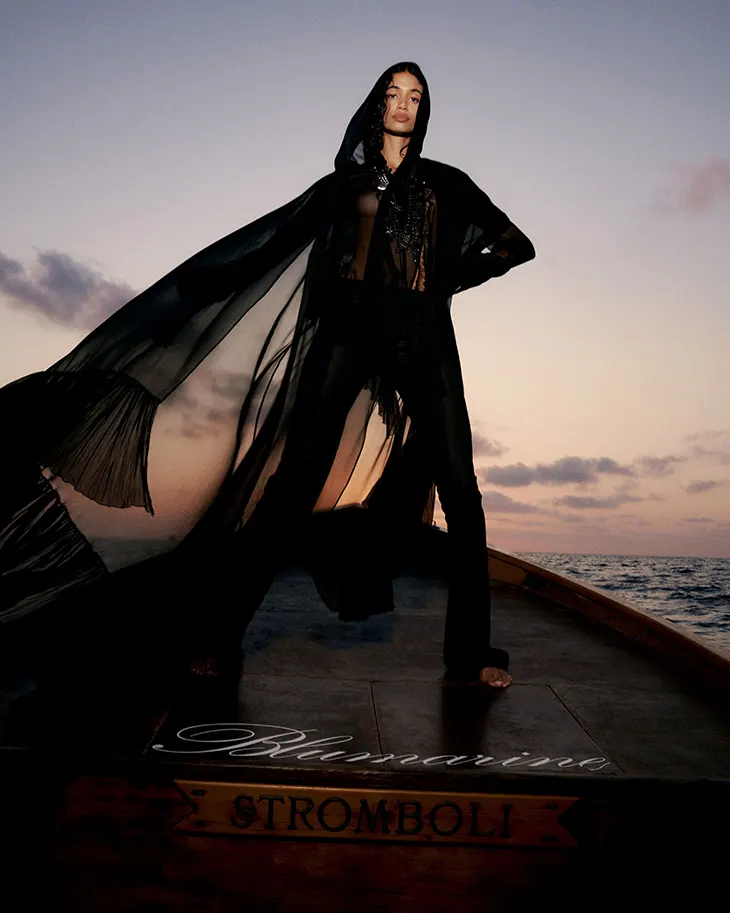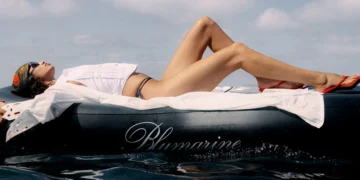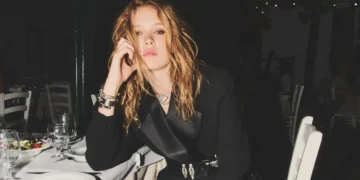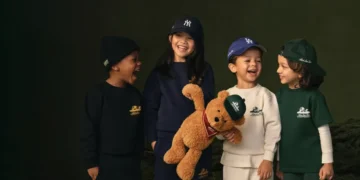
David Koma introduces the Blumarine Resort 2026 collection with a sharp focus on Milanese dressing habits shaped by movement. The city’s closeness to water and mountains informs a mindset that doesn’t pause for location changes. Instead, Koma interprets this rhythm through clothing that shifts smoothly from formal settings to coastal escapes. Photographed on the black volcanic sands of Stromboli, the collection reflects this duality, balancing the sensuality of vacation with the structure of urban dressing.
The collection opens with a series of transformations: cover-ups and pareos evolve into sheer cardigans, midi skirts, and dresses bearing zebra prints drawn from the archive. Some pieces feature agave flower embroidery, a nod to the island’s native flora. Crinkle georgette appears throughout in zebra-printed kaftans and long hooded shirts, followed by slip dresses and camisoles in solid shades with lace detailing. Georgette evening dresses bring drama without stiffness, and skin-tone tulle under white lace introduces a layered take on near-nudity.
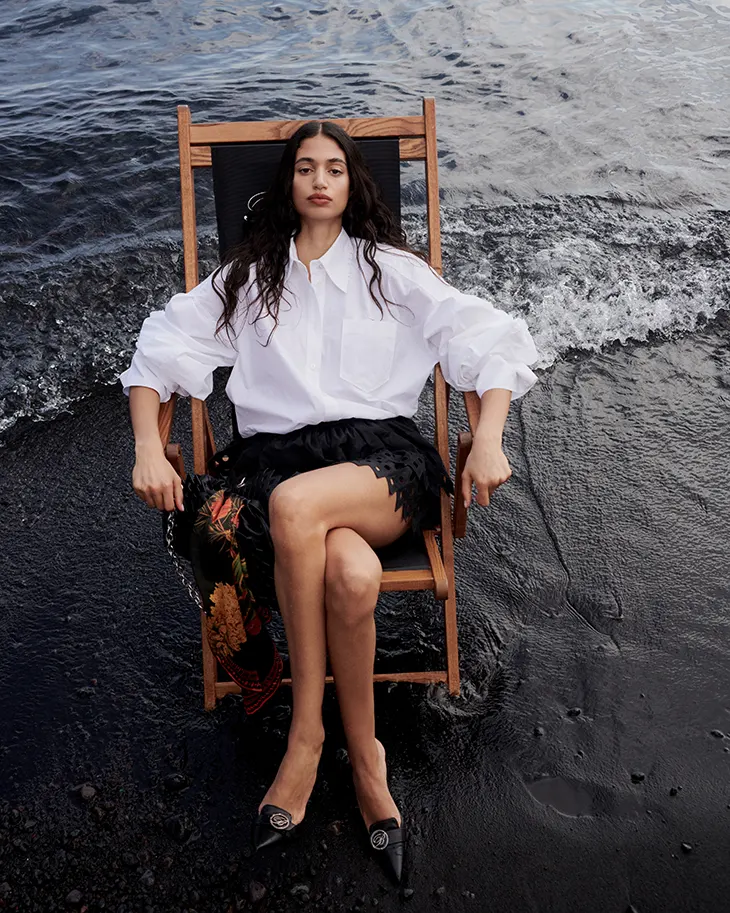
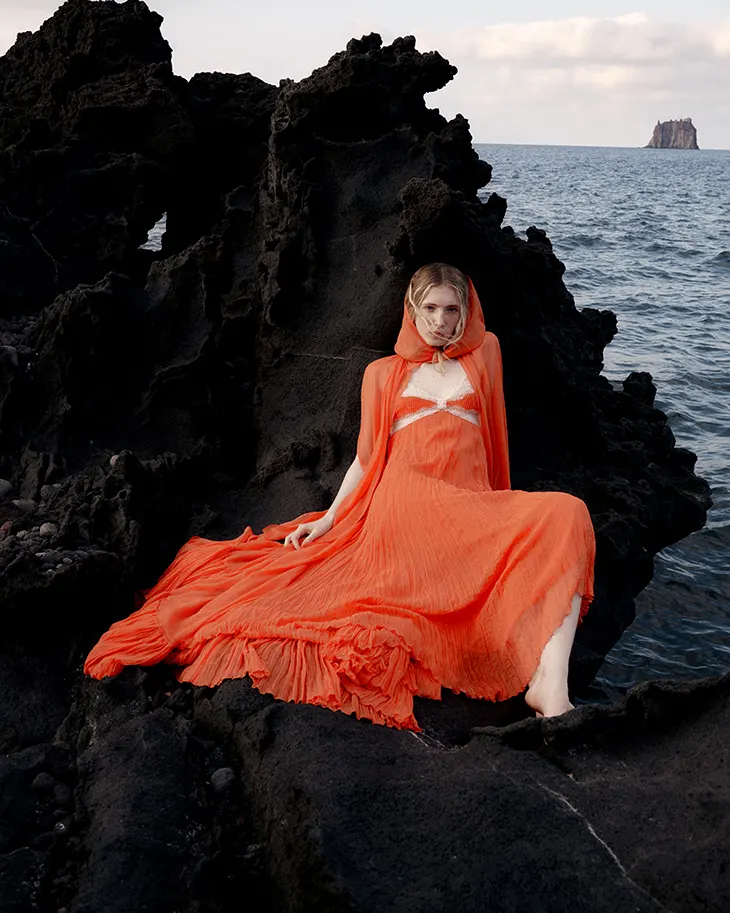
Koma uses lace not only for finish but as a structural foundation. Poet blouses and dresses in rose Chantilly lace hold form, while lightweight knits, including cardigans, tops, dresses, pyjamas, and swimwear, integrate lace inserts or mimic their structure. A distressed knitting technique gives the zebra motif new life across long dresses, midi skirts, and jumpers. Swimwear carries over into the main wardrobe through wet-look bikinis and suits, all punctuated with metal rings and dolphin charms. That visual vocabulary spreads to ruched and draped jersey dresses, hooded minis, and roll-necks trimmed in lace. A swimmer print adds movement to sheer jersey tops and knit cardigans, while crystals bring subtle contrast across tops and swimwear.
Instinctive combinations mark another chapter of the collection. Scarves function as halter dresses, sarongs, or oversized shirts printed with zebra or agave motifs. Sponge bouclé appears in mini skirts and dresses tied like towels, and that same fabric builds five-pocket jackets, tailored blazers, and drawstring hooded outerwear that reads like bathrobes. White shearling forms a robe-like coat, while striped knitted dresses with hoods follow the same cues. Poplin shirt dresses, halter tops, and trapeze silhouettes feature pleated plastrons that repeat in tailored wool midi dresses and tops paired with wide or fitted trousers.
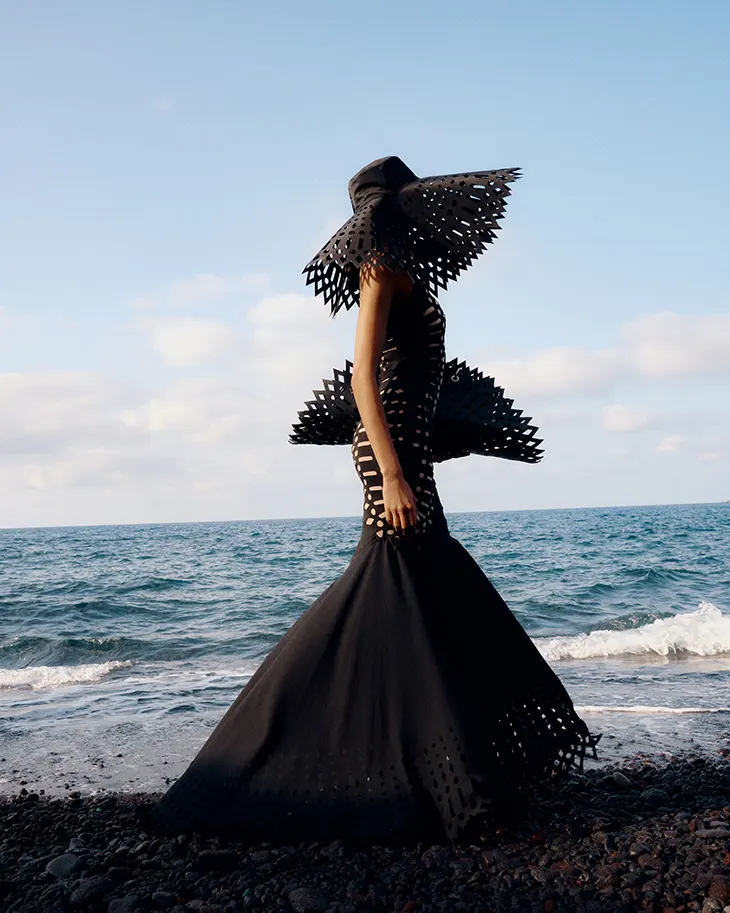
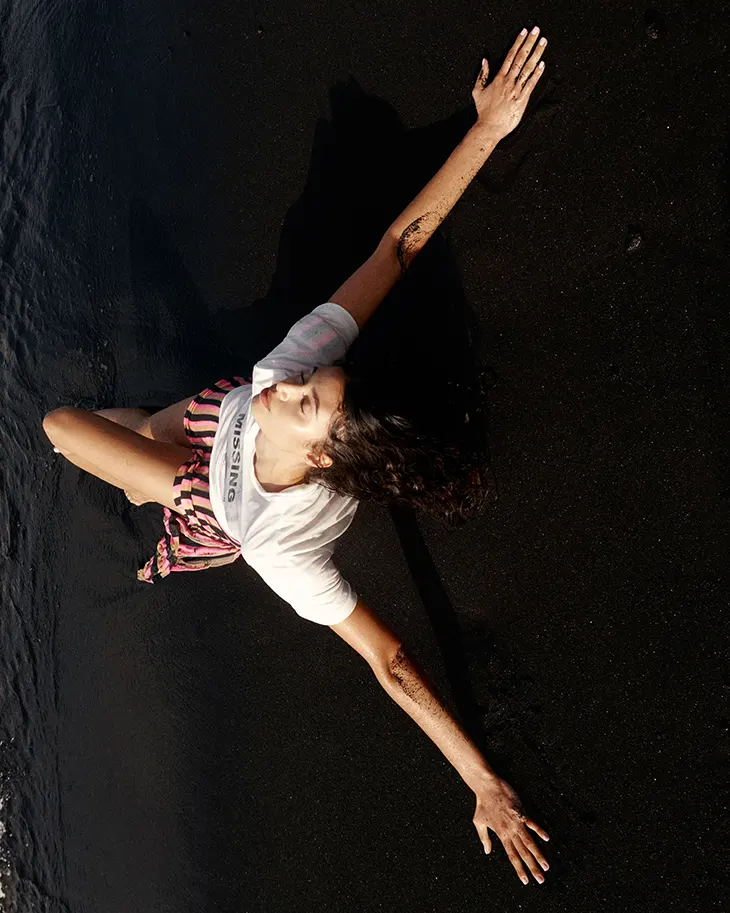
Koma introduces workwear elements with a relaxed edge through cotton canvas bombers, zebra-printed parkas, and cargo pants. Aged cotton bull denim turns up in halter tops, long cargo skirts, and mini dresses, all shaped by a breezy attitude. Denim jackets and jeans feature laser-distressed zebra effects, including logo applications across the back. Some jeans layer with mini skirt panels, while overshirts show raw edges. That texture continues in hooded bombers, crochet dresses, V-neck knits, and midi skirts. Taffeta arrives with sharp-edged cut-outs on sleeves and hems, building out both mini and voluminous shapes.
Accessories sharpen the contrast between city and beach. A wide-brim taffeta hat sets the tone, its crescent shape mirrored in a leather beach bag produced in lobster red, white, and black. The same shape appears in raffia for both large and small versions. A butterfly-shaped raffia bag joins the collection in red, black, or sand. The familiar Blumarine messenger bag returns with a pierced flap and comes in zebra or brown canvas, joined by a mini model adorned with sea pendants. Footwear completes the picture through pointed pumps with butterfly pendants, sling-backs in canvas and satin, and kitten-heel mules with metal B buckles. Sandals in black or orange leather appear elevated on heels rather than kept flat. Jewelry relies on exaggerated volumes, necklaces built from plexi and chain links, hoop earrings, and cuffs, all tied together by sea-inspired dolphin charms.
